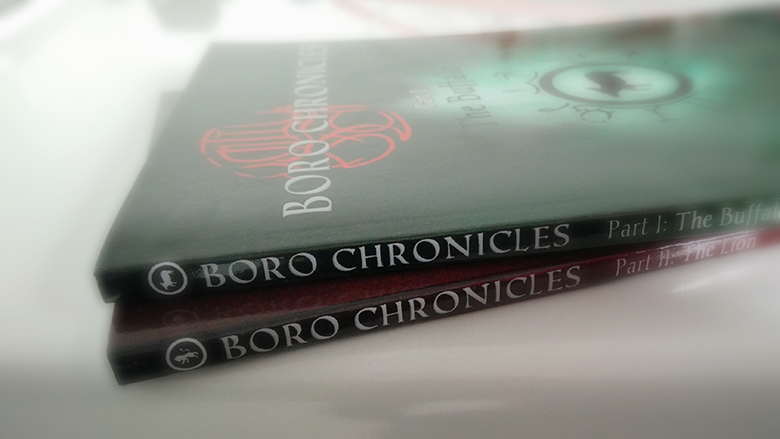A quick guide to writing something that’s fun to make and to read.

Ever wanted to write a story, but didn’t know where to start?
Write something beautiful and exciting to show off for the next time you meet your buddies at a cafe. Or even publish it online on a WordPress blog or something for everyone to read. Your choice, of course.
If you’re not entirely sure how, then worry not. I am a published author, and I’ve written two books. I can show you, with the help of some of my own references and favorite writing tools.
Let’s get started.
Step 1: The Idea Seed

The initial idea is the backbone of everything. It determines what will happen, who will be in it, and everything else. Absolutely nothing can be decided without that initial seed of an idea.
While it’s true that inspiration can come from absolutely anywhere, I usually defer to one of my heroes, cartoonist Mark Crilley. He has outlined 10 different ways to find an idea seed:
- Base your story on a real-life occurrence: Something that has happened to you or someone you know.
- Do a mash-up of two (or more) different story genres.
- Build your story on a “what-if” scenario.
- If you have a character but not a story, try to tell a “day in the life” of that character.
- Think of a single scene, then “reverse-engineer” a story to get you to that scene.
- Keep an eye out for interesting news stories. There’s a reason why so many movies are “based on a true story.”
- Begin by copying a favorite book or movie, then change it until it becomes a very different story.
- Start with a location that interests you, then write about a person who lives in that location.
- Don’t just watch TV, study TV. (Or books, movies, etc.)
- Just start writing! Often a great story can emerge even when you’re totally making it up as you go along.
Another tool you can use is the TV Tropes Story Generator. It takes various tropes from fiction and tosses them together to form a story concept. Though this one is a bit more hit-and-miss, it can still give some interesting ideas.
Don’t worry if the idea seems unoriginal or derivative. Everything has to come from something; true originality cannot exist.
Once I have the seed I write it down as an “elevator pitch”. Just 1-2 sentences describing what happens. No, you can’t use mine.
“Three Little Pigs” retelling but with humans and not pigs, a corporate empire instead of houses, and a terrorist group instead of a wolf.
Step 2: Grow the Seed

Once you have an idea, it’s time to develop it.
Take that initial pitch sentence and start expanding on it. Turn that one sentence into a paragraph. No, you still can’t use mine.
Three brothers, Kevin, Bill, and Harvey, inherit their father’s vast corporate empire after his mysterious death. The empire gets divided evenly among the brothers, and each brother builds a skyscraper to house their inheritances. It is then revealed that their father’s death was caused by a collusion between their father’s advisor, and a terrorist group known as CANIS. One by one, CANIS blows up each of the skyscrapers, and the three brothers die. The end.
Notice the change in the ending? This is how you can keep things fresh.
From here I keep expanding it until the story becomes more “story-shaped”; that is, with a clear beginning, middle, and end. And to do that, I refer to…
Step 3: The Hero’s Journey

Joseph Campbell outlined a trend in ancient myths all over the world: that they all follow almost the exact same structure. Stretch the definitions of the headings a bit and you have a basic outline for every story ever told by humanity.
Here’s a document you can use to fit your story into the Hero’s Journey. If you can’t fill in a particular stage, then just skip it; it’s not necessary to fit the structure to the tee. No, you still can’t use mine.
- Ordinary World: The story opens with the funeral of the father.
- Call to Adventure: The family’s lawyer reads out the father’s will and tells the brothers what they have inherited.
- Refusal of the Call: [SKIPPED]
- Meeting the Mentor: The brothers meet their father’s advisor who tells them to each build their own skyscrapers.
… and so on.
This may be considered lazy or cheating, but to that I say, if your story is good, it’s going to end up following this structure anyway. So why run from it? Besides, I consider the structure to be more like training wheels. Once the stages are filled in, you can remove the headings and modify it however you like.
Step 4: Characterization

Now that you have your story, it’s time to properly dig deep into who the main players are. What are their names? What inspired them to do what they’re doing? And how will their personalities affect the story?
Depending on how this step goes, the story might be changed in some places. Or it might not. Who knows? Why, you do!
Remember: flaws are what make people interesting. A character who can do no wrong is boring. And no, you still can’t use mine.
- Kevin Saubauer – The responsible yet impatient eldest brother
- Bill Saubauer – The calm yet stingy middle brother
- Harvey Saubauer – The smart yet big-headed youngest brother
- Peggy Saubauer – The hysteria-prone mother
- Adolf Saubauer III – The late father
- Wolfgang “L” Lopez – The charismatic yet sociopathic leader of CANIS
- Sylvia Schlanger – The genial yet megalomaniac advisor
Step 5: The Actual Writing (yes, finally)

The most important rule to remember here is a simple one: show, don’t tell. For example, don’t outright state that Bill is stingy, show him behaving that way.
Bill refused to pay for it, citing that it was too expensive. Even after Harvey pointed out that the price was normal. Regardless, Bill continued to try and haggle the price down, ignoring the clerk who kept insisting that haggling isn’t allowed.
Now that we have everything, the story and the characters, it’s time to write it all to life.
Lights pen, camera paper, ACTION!
As they lowered his coffin into the ground, a gentle drizzle began.
Adolf Saubauer III, one of the greatest industrialists of our time, was dead.
His widow Peggy should have been crying, but had no more tears left to shed. To her left stood their three sons, wondering what will happen next.
He was gone too soon, they thought. 57 is far too soon.
So there you have it. A quick guide on storywriting. Don’t worry if your story isn’t any good, we’ve all gotta start somewhere. Keep at it, and you will improve eventually.
Happy writing!
